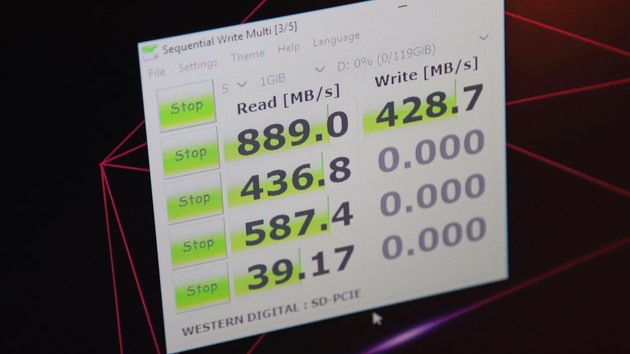INTRODUCING SD EXPRESS
Change for the Better: Introducing SD Express
THESE CARDS MAY REPLACE THE STORAGE DEVICES USED IN TODAY’S LAPTOPS, PHONES , IOT DEVICES AND MANY OTHER SPEED AND HARDWARE DEMANDING DEVICES, GREATLY BENEFITING IN THE SPEED, PERFORMANCE , SIZE AND DESIGN.
 IMAGE BY SD ASSOSIATION
IMAGE BY SD ASSOSIATION
 IMAGE BY SD ASSOSIATION
IMAGE BY SD ASSOSIATION
USING BOTH PCIe AND NVMe
 IMAGE BY SD ASSOSIATION
IMAGE BY SD ASSOSIATION
It’s not uncommon for consumer and business behaviors to influence major changes in an industry. Consider the constant demand for more storage. Billions of connected devices are expected to generate 155 yottabytes of data by 2021. Only 0.0013 percent (about two zettabytes) of that is expected to be captured, and only 4.2 percent is going to be transmitted to the cloud1 the rest is going to be stored in various types of local storage. Amazing numbers!
This type of evolution within an industry happens constantly, and a few current market trends are driving new changes in the realm of removable storage:
- The endlessly growing needs for storage and higher-capacity cards drive higher-performance capabilities that allow reasonable upload/download time for content.
- Client computing is moving quickly from SATA to PCIe Gen3, followed by Gen4, and various memory-related emerging markets – such as autonomous vehicles and connected cars that use multi-sensor data collection as well as 360o and VR/AR cameras; high-resolution gaming; and multi-channel IoT devices – all require high-speed memory interfaces and multi-channel operations.
- Mobile computing infrastructure is evolving, spurring growing performance levels of input/output (IO) communication interfaces as well as internal embedded storage.
- Google Android devices now can use SD memory cards as embedded memory or extended system storage for video/audio content, as well as for storing and running apps, but running Android applications from a card requires higher random performance and sequential performance capabilities.
These new technology trends signal a demand for memory cards with higher speeds, improved protocols and interfaces, high performance sequential and random access – and to meet this demand, the new SD 7.0 specification introduces SD Express.
SD EXPRESS OFFERS SPEED UPTO
 IMAGE BY COMPUTERBASE
IMAGE BY COMPUTERBASE

IMAGE BY MI COMMUNITY

